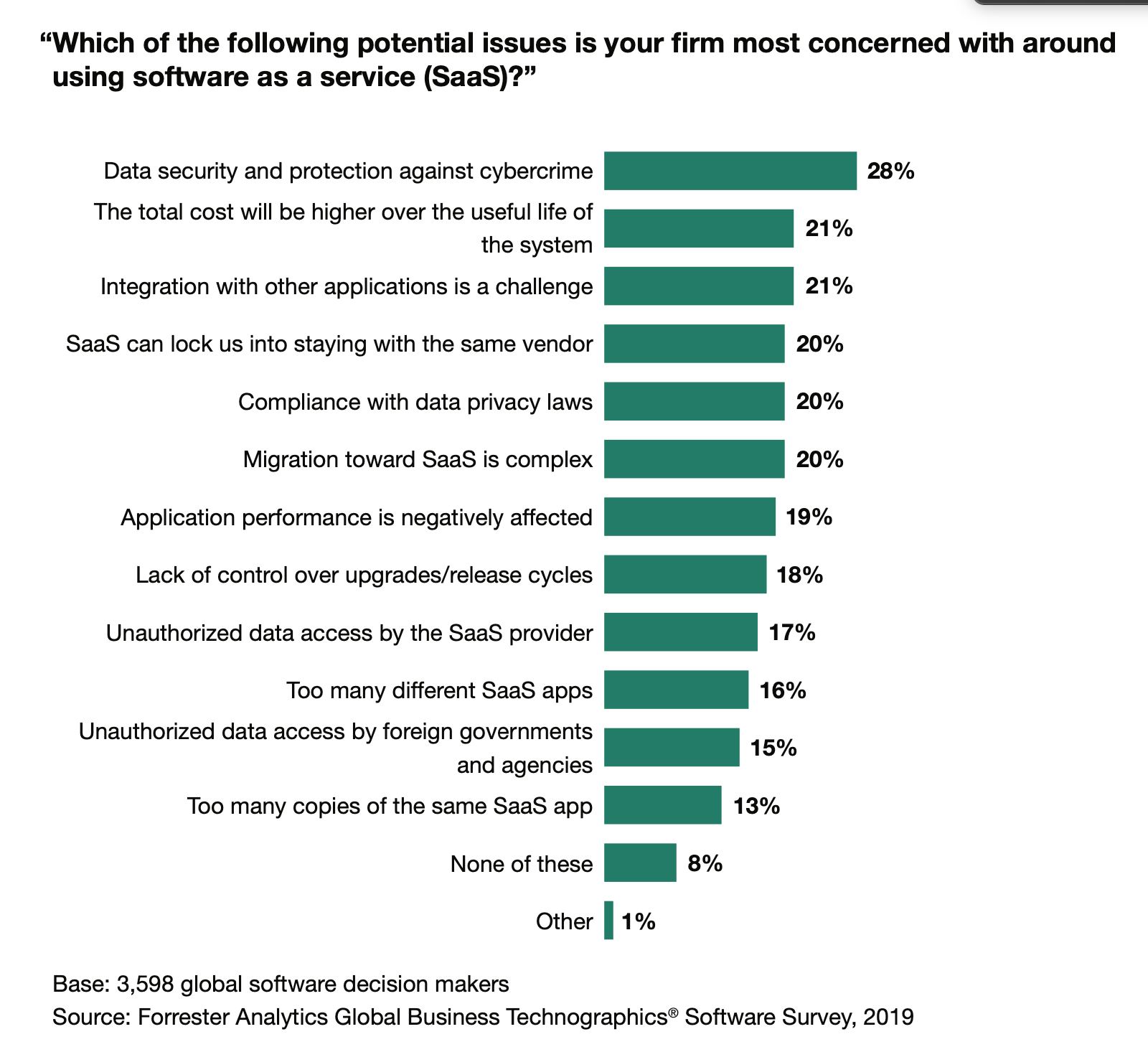SaaS Operations and the Road Ahead for Enterprise IT
December 16, 2020
4 minute read

Our CEO David Politis recently wrote that 2020 would prove to be the tipping point for SaaS adoption in the enterprise. In a recent report by Forrester Research titled “Best Practices for Software-As-A-Service Operations,” Politis’ notion was confirmed—again.
As part of this report, Forrester interviewed enterprise IT leaders to understand the current challenges and best practices for mastering SaaS at scale. Last week, BetterCloud’s Chief Strategy Officer Shreyas Sadalgi explored the findings of this report further with its author, Bill Martorelli, Principal Analyst at Forrester Research. Missed the live event? Let’s recap some of the key takeaways from their chat.
If you’d rather watch the entire recording of this webinar, click this link to check it out. It’s worth carving out some time to do so.
Why SaaS Operations Is Crucial
Raise your hand if your company uses between 20 and 80 SaaS applications. Now keep it raised if your biggest concerns include securing your SaaS environment and managing costs.
If your hand is in the air right now, you have a lot in common with most of the folks who attended last week’s webinar—and with the IT leaders that Forrester interviewed for this market research report.
Martorelli attributes the proliferation of SaaS to a few key factors:
- 57% of decision makers said they invest or plan to invest in SaaS as part of their organization’s digital transformation strategy.
- SaaS decisions are now strategic and have raised their profile on the company level.
- Remote work is here to stay. Martorelli predicts that even after a COVID-19 vaccine becomes widely available, remote work will increase by 3X.
As a result, Forrester found that enterprise IT leaders are particularly concerned about governing their growing SaaS portfolios. In addition to managing SaaS sprawl and variable usage, the threat of data security and cybercrime are greater than ever before.
Still, these are concerns for enterprises with a lot of SaaS applications, right? Not exactly.
Sadalgi polled the audience to see how many SaaS applications are in their environments. As the results came in, Martorelli mused that while some organizations have hundreds of apps at their disposal, smaller cloud-based environments are feeling the impact of the SaaS explosion.
“The concerns we hear about in regards to SaaS from our clients tend to emerge even for companies that are only using between 10 and 20 SaaS applications.” Bill Martorelli, Forrester Research
Clearly there’s a need for SaaS operations. But what are the key principles of SaaS operation—and how do you execute them at scale?
Principles of SaaS Operations
Based on its conversations with IT leaders, Forrester says there are five key elements of SaaS operations, which the report outlines in great detail. Martorelli focused on the following three during the webinar:
- Asset management. There are hundreds of SaaS solutions on the market, but many of the lessons we’ve learned about on-prem asset management don’t apply to a cloud-based environment.
- Cost management. Martorelli says that there’s a huge opportunity for IT to identify unused and redundant licenses.
- Security management. According to Forrester’s research, 64% of global enterprises have or are implementing their single sign-on portals to employees for SaaS-based app access.
Sadalgi really emphasized the importance of the security element, and for good reason. One customer Sadalgi spoke to told him that its offboarding process previously lived in an 11-page document, on which the word “click” appeared 65 times. Take a second to marvel at that story before we consider the very real security risk this presents.
Even the most skilled IT pros are prone to human error. The risk for a mistake in this scenario is very real—and Sadalgi pointed out that this could ultimately lead to a huge data breach.
Martorelli and Sadalgi agree that enterprises need a consolidated workflow management solution to manage and secure SaaS applications. But to their surprise, many of the attendees said that they’re still using spreadsheets to manage costs. Even more strikingly, 25% of respondents are still using scripts to handle administrative tasks.
One attendee noted that while they have automated workflows in place to manage users and apps, many of them still require manual work to get them started. Even worse, they don’t work for every app.
“A lot of people are trying to use out-of-the-box workflow platforms,” Sadalgi responded. “But what those platforms lack is the deep context you need. How do you feed meaningful information into workflow steps? That needs to be a part of a SaaS operations platform.”
Forming a Cloud Center of Excellence
Sadalgi and Martorelli wrapped up their conversation by addressing a critical question: What does a cloud center of excellence look like?
The IT leaders that Forrester spoke to for its report offered up a few practical tips to help their peers master SaaS operations. The list is long and worth checking out, but Martorelli highlighted a few in particular, including:
- SaaS is no longer an afterthought. Martorelli says that SaaS has grown to the point that it now merits the attention that on-prem applications demand.
- Prioritize the end-user experience. There are endless use cases for automation, but Martorelli argued that it could be a key component to improving the end-user experience.
- Strive for highly automated and iterative SaaS operations. “Clearly automation is critical,” Martorelli said. “And we think this is the future for this area.”
Martorelli also urged the audience to dedicate a team to SaaS operations. Sadalgi was curious to know how many people organizations already have dedicated headcount for this function. Overwhelmingly, respondents said that SaaS operations isn’t currently anyone’s full-time job—and many others said that the work was split across different teams.
“Even if it’s not one person’s job right now,” Martorelli responded. “Getting someone into that role will be critical going forward.”
This was just a short recap of some of the major takeaways from the webinar, but there are many more that we didn’t showcase here. Want to dive into the entire conversation? Click here to watch the recording.






